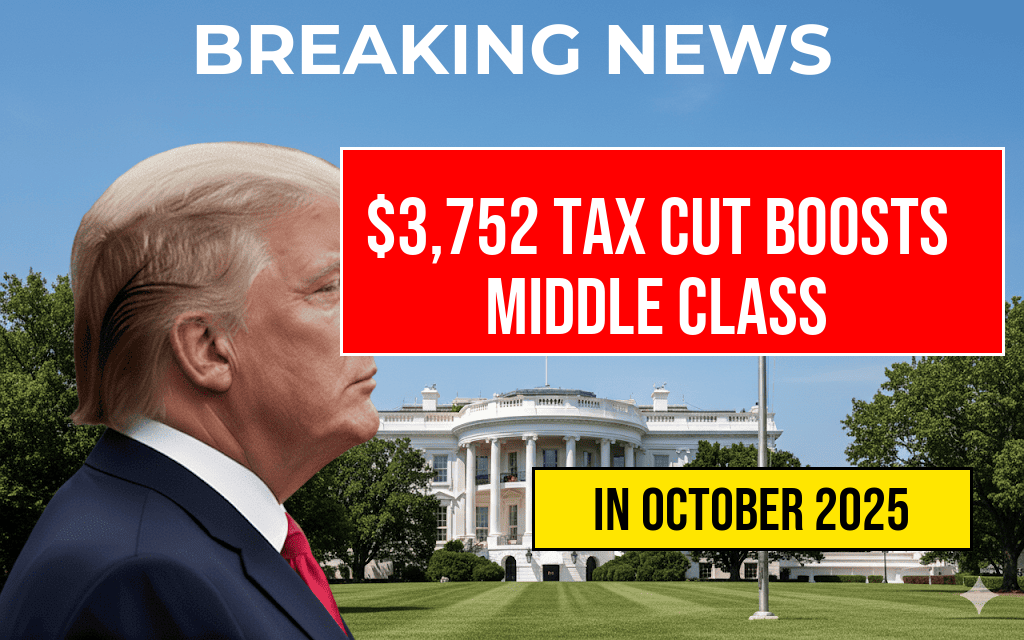A recent legislative measure has introduced a $3,752 tax cut for individuals across all 50 states, aiming to bolster the financial stability of middle-class households. The legislation, signed into law last week, targets an average reduction in federal tax obligations, delivering tangible benefits to millions of Americans. This move reflects ongoing efforts by policymakers to address income disparities and stimulate economic activity by providing targeted tax relief. Experts suggest that the new tax cut could increase disposable income, potentially influencing consumer spending patterns and local economies nationwide.
Details of the Legislation and Its Impact
Scope and Distribution of the Tax Cut
The legislation allocates an average of $3,752 per taxpayer, with the amount adjusted based on income levels and filing status. The primary focus is on middle-class households earning between $50,000 and $100,000 annually, who stand to benefit the most from this increase in take-home pay. According to the Internal Revenue Service (IRS), the tax cut is expected to affect approximately 150 million filers nationwide.
| Income Range | Average Tax Cut | Number of Filers |
|---|---|---|
| $50,000–$75,000 | $3,800 | 60 million |
| $75,001–$100,000 | $3,700 | 50 million |
| $100,001–$150,000 | $3,600 | 25 million |
| $150,001 and above | $3,500 | 15 million |
Economic and Social Implications
Economists anticipate that increased disposable income among middle-class households could lead to heightened consumer spending, which in turn may stimulate local businesses and service industries. Additionally, the legislation aims to reduce tax burdens that have historically widened income gaps, fostering a more equitable distribution of wealth. However, some analysts caution that the long-term effects depend on broader fiscal policies and economic conditions.
State-Level Variations and Implementation
Uniform Benefits with Local Adjustments
While the federal tax cut provides a uniform baseline, individual states may implement additional adjustments based on their unique tax codes and economic priorities. States with higher living costs, such as California and New York, are expected to see slightly higher total benefits for residents, aligning with their cost-of-living adjustments.
State Revenue and Budget Considerations
State governments are analyzing the potential impact on their budgets. Some anticipate a short-term decrease in revenue but project that increased economic activity could offset losses over time. States such as Texas and Florida, which rely heavily on sales and property taxes, are preparing to adapt their fiscal strategies accordingly.
Public Response and Political Perspectives
Support from Middle-Class Advocates
Advocates for middle-income Americans praise the legislation for providing meaningful relief. Jessica Martinez, director of the National Middle-Class Coalition, stated, “This tax cut is a significant step toward restoring economic fairness and supporting families trying to make ends meet.”
Critics and Skepticism
Some critics argue that the tax cut may not be sufficient to address systemic economic challenges and could add to federal deficits if not paired with spending reforms. Senator Mark Reynolds, a fiscal conservative, expressed concern: “While tax relief is welcome, we must ensure it is sustainable and does not compromise our long-term fiscal health.”
Next Steps and Broader Context
Monitoring Outcomes and Adjustments
Federal agencies are expected to monitor the legislation’s impact over the coming months. Data on economic indicators such as consumer spending, employment rates, and income distribution will inform potential adjustments or future fiscal policies.
Broader Economic Policy Landscape
This legislative move aligns with broader efforts to promote economic growth through targeted tax policies. It complements initiatives like infrastructure investments and workforce development programs, which together aim to foster a resilient and inclusive economy. For more detailed analysis, consult resources such as the Wikipedia page on U.S. economic policy.
As states and individuals adapt to the new fiscal landscape, the coming months will reveal how effectively this $3,752 tax cut translates into tangible benefits for middle-class Americans and the broader economy.
Frequently Asked Questions
What is the total amount of the new tax cut introduced in the legislation?
The legislation provides a tax cut of $3,752 for each of the 50 states, aimed at boosting benefits for the middle class nationwide.
How does the new legislation benefit the middle class?
The legislation increases tax relief for middle-income families, making it easier for them to save and invest, thereby strengthening their financial stability.
Which states are affected by the tax cut?
All 50 states are included in the legislation, ensuring a uniform benefit across the United States for middle-class households.
When will the tax benefits take effect?
The tax cut is scheduled to be implemented in the upcoming tax year, providing immediate relief for taxpayers after the legislation’s passage.
What is the overall goal of the new legislation?
The primary goal is to boost middle class benefits through targeted tax cuts, supporting economic growth and reducing financial burdens on working families.






